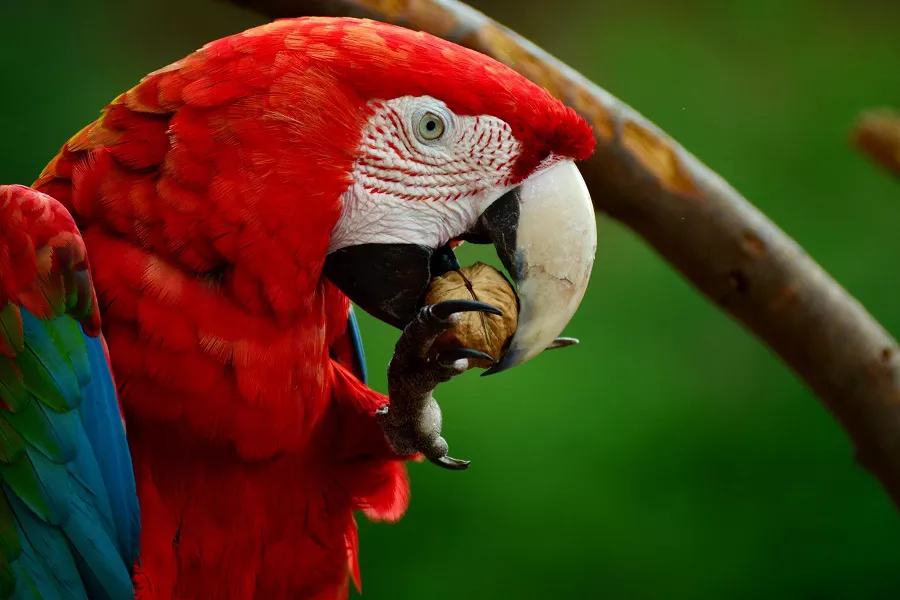Honduras, a country known for its rich biodiversity and stunning landscapes, is home to a remarkable avian species that holds great cultural and ecological significance—the Scarlet Macaw (Ara macao). With its vibrant plumage and distinctive calls, the Scarlet Macaw has captured the hearts of both locals and visitors alike. This article explores the fascinating characteristics, conservation efforts, and cultural importance of this magnificent bird.
What is the National Bird of Honduras?
The national bird of Honduras is the Scarlet Macaw (Ara macao). It is a vibrant and colorful bird known for its striking red, blue, and yellow feathers. The Scarlet Macaw is highly regarded in Honduran culture and is considered a symbol of beauty and freedom.
How did Honduras Choose their National Bird?
The National Congress of Honduras chose the scarlet macaw as the national bird on June 28, 1993. This was their way of promoting the beautiful macaw and recognizing its place in Honduran history. Now residents honor the bird every year on June 28, as Hondurans celebrate Scarlet Macaw Day.
Physical Characteristics of Scarlet Macaws
The Scarlet Macaw is a large, brilliantly colored parrot species that stands out with its striking red, blue, and yellow feathers. It boasts a long tail, strong beak, and a wingspan of up to 4 feet (1.2 meters). Adult Scarlet Macaws typically measure around 32 inches (81 centimeters) in length and weigh between 2.2 to 3.5 pounds (1 to 1.6 kilograms). These impressive physical attributes make them one of the most visually captivating birds in the world.
Habitat and Distribution of the Scarlet Macaws
Scarlet Macaws are native to the tropical rainforests of Central and South America, including parts of Honduras. In Honduras, they can be found in various regions, including La Mosquitia, Río Plátano Biosphere Reserve, and Pico Bonito National Park. These birds prefer lowland forests, savannas, and mangroves, where they can find an abundance of food sources such as fruits, nuts, seeds, and flowers.
Behavior and Communication
Scarlet Macaws are highly social creatures that form strong pair bonds and live in flocks ranging from a few individuals to over 100 birds. They communicate through a combination of loud squawks, screeches, and calls, which serve to establish territory, attract mates, and maintain group cohesion. Their raucous vocalizations can be heard from a considerable distance, adding to the vibrant ambiance of their natural habitat.
Conservation Status
The Scarlet Macaw faces numerous threats to its survival, primarily due to habitat loss, illegal pet trade, and poaching. Deforestation, driven by agriculture, logging, and urbanization, has resulted in the destruction of large areas of their natural habitat. Additionally, the capture of these birds for the exotic pet trade has significantly impacted wild populations. To combat these challenges, various conservation organizations and governmental initiatives have been implemented to protect the Scarlet Macaw and its habitat.
Conservation Efforts
In Honduras, several conservation projects are dedicated to safeguarding the Scarlet Macaw population. These initiatives focus on habitat restoration, anti-poaching measures, and community engagement. For instance, the establishment of protected areas, such as the Río Plátano Biosphere Reserve, provides a safe haven for the macaws and other endangered species. Furthermore, education and awareness programs aim to reduce demand for illegal pet trade and promote responsible tourism practices that benefit local communities and wildlife conservation.
Cultural Significance
The scarlet macaw is of immense cultural importance in Honduras as the national bird of Honduras. It is considered a national symbol and features prominently in indigenous art, folklore, and traditional ceremonies. The bird’s vibrant plumage and majestic presence have inspired local artisans to incorporate its image into handicrafts, paintings, and textiles. Moreover, Scarlet Macaws are believed to possess spiritual significance, representing strength, beauty, and freedom in indigenous cultures.
Ecotourism and Economic Benefits
The Scarlet Macaw’s allure has also contributed to the growth of ecotourism in Honduras. Birdwatchers and nature enthusiasts flock to the country to catch a glimpse of these magnificent creatures in their natural habitat. This influx of visitors generates economic opportunities for local communities through tourism-related activities, including guided tours, accommodations, and souvenir sales. By promoting sustainable tourism practices, Honduras can harness the economic potential of Scarlet Macaw conservation while ensuring the long-term protection of these birds.
Conclusion
The Scarlet Macaw stands as a symbol of natural beauty, resilience, and cultural heritage in Honduras. Its vibrant plumage, captivating behavior, and ecological significance make it a cherished national bird. Through concerted conservation efforts, including habitat protection, anti-poaching measures, and community engagement, Honduras strives to secure the future of this magnificent species. By valuing and preserving the Scarlet Macaw, we not only safeguard biodiversity but also honor the rich cultural tapestry that intertwines with nature in this remarkable Central American nation.


 Facebook
Facebook  Instagram
Instagram  Youtube
Youtube 